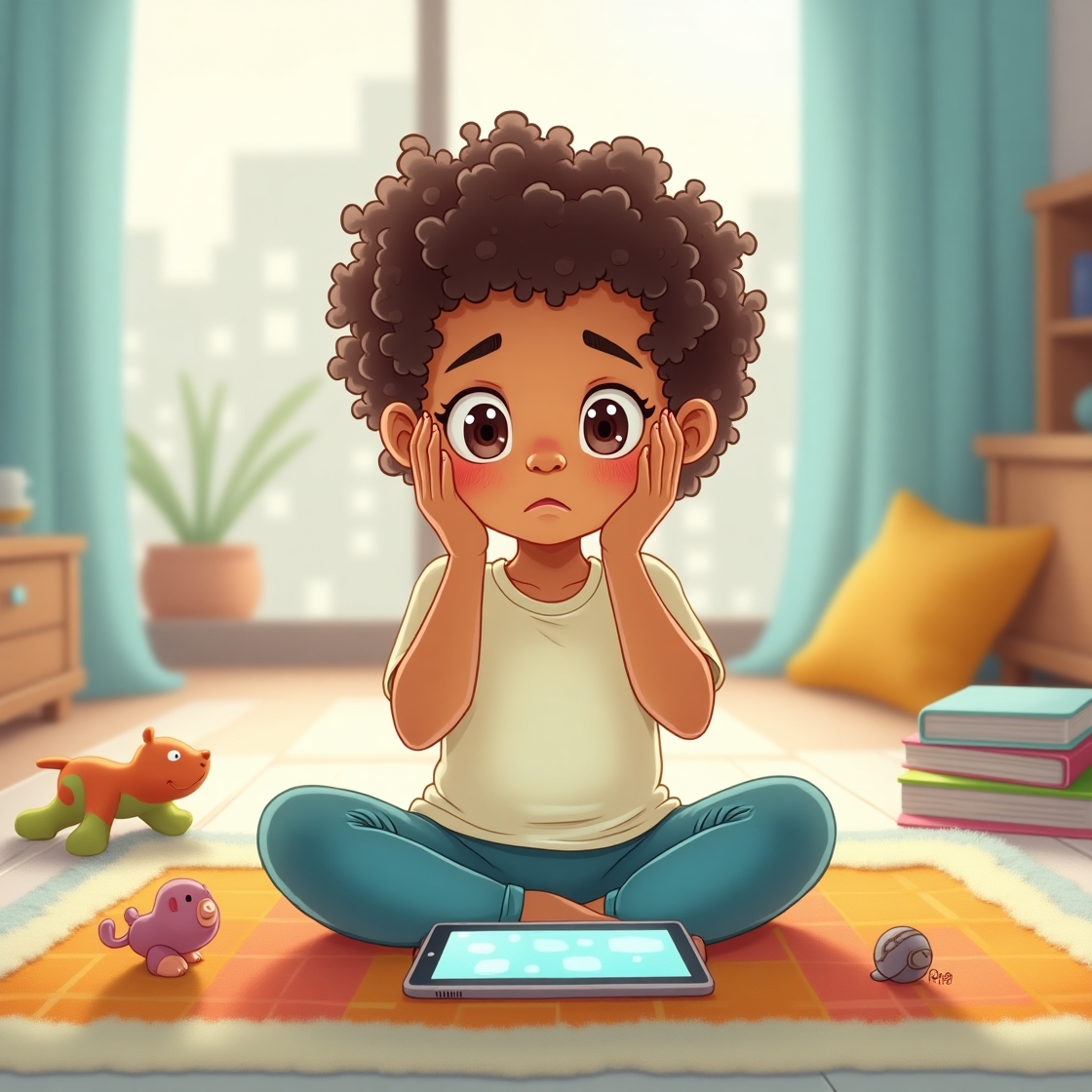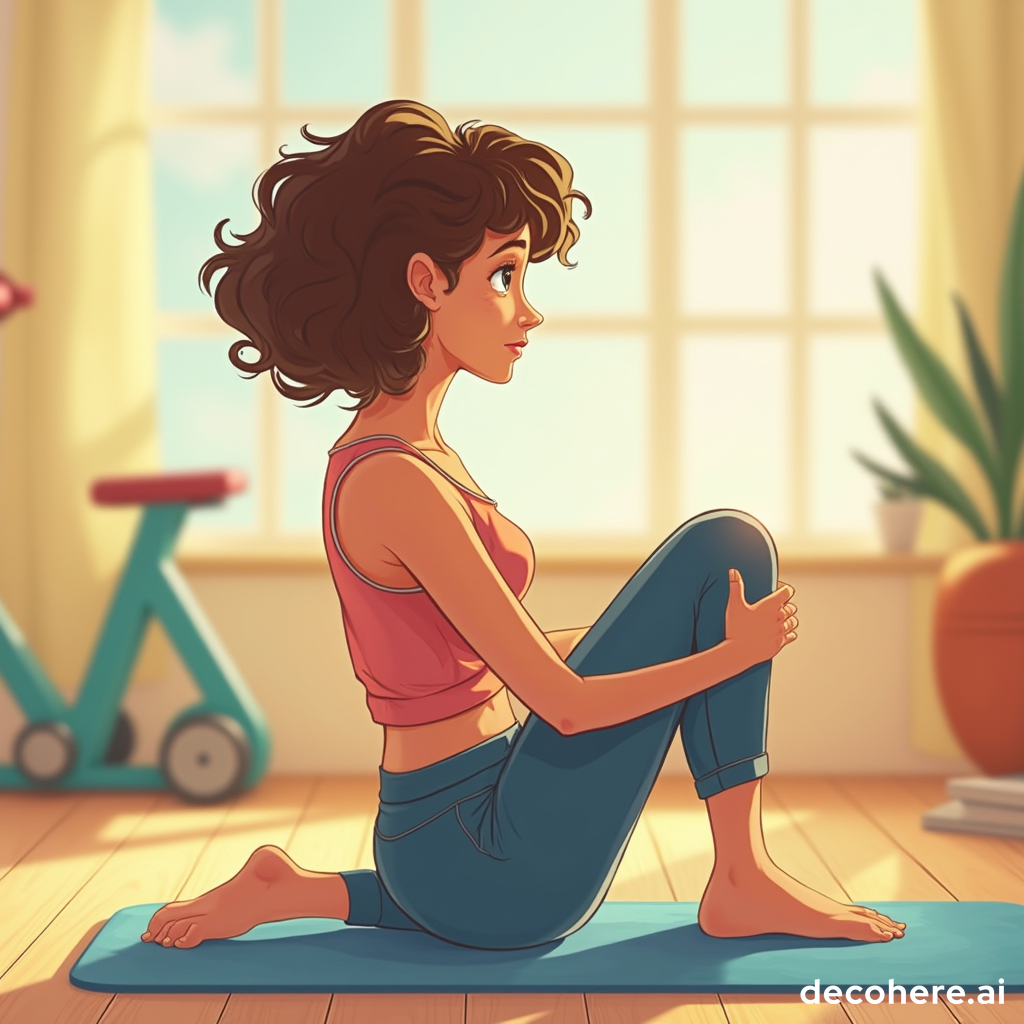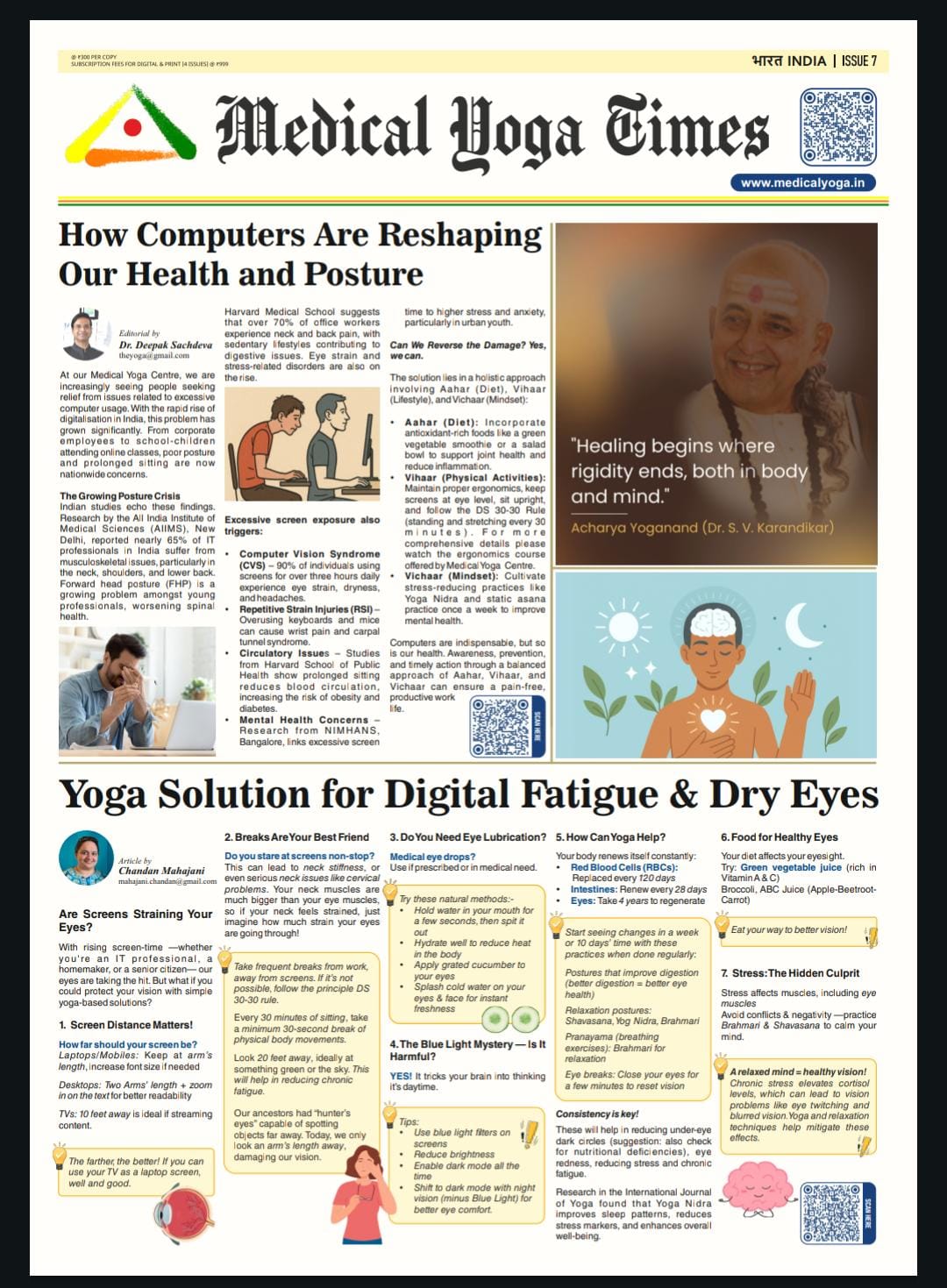Screen Time Blues: Yoga Eye Exercises to Protect Young Eyes

Screen Time Blues: Yoga Eye Exercises to Protect Young Eyes
With increased reliance on screens for education and entertainment, children today are spending more hours glued to digital devices than ever before. Prolonged screen time often leads to eye strain, dry eyes, headaches, poor sleep, and even difficulty in concentration — a condition now commonly referred to as "screen time blues." While limiting screen exposure is ideal, it is not always practical. Thankfully, yoga offers simple yet powerful practices to help protect young eyes and balance the nervous system.
Palming & Eye Movements
Encourage children to gently rub their palms together and gently cup them over closed eyes. This soothes eye muscles and relieves fatigue. Follow up with guided eye movements — side to side, up and down, diagonals, and circular motions. These exercises enhance blood flow and improve ocular flexibility.
Bhramari (Humming Bee Breath)
Bhramari Pranayama is a calming breathing technique where the child inhales deeply and exhales while making a gentle humming sound like a bee or chant Mmmmm called the M-kara. This vibration soothes the brain, reduces anxiety, and helps relieve tension built up around the forehead and eyes. Practicing this for just 3–5 rounds a day can promote focus and inner calm — especially useful before or after online classes.
Vipareet Karani (Legs-Up-the-Wall Pose)
Have the child lie on their back with legs up against a wall, forming an L shape. It reduces fatigue, calms the nervous system, and even helps with better sleep. Just 5–10 minutes in this pose can act as a natural recharge. Gentle inversions like Vipareet Karani aid in venous return from the lower limbs and facilitate parasympathetic nervous system activation, which in turn promotes better circulation to the head and relaxation.
Final Tip: Teach kids the “20-20-20” rule — every 20 minutes, look 20 feet away for 20 seconds. Pair that with these yoga tools, and you are giving their eyes (and minds) the break they deserve.
A little mindful movement goes a long way in keeping their screen-time world balanced and bright.
References:
Coulter, H. David. Anatomy of Hatha Yoga (2001)
Tiwari, R., & Singh, S. (2017). Effect of yogic visual exercises on eye fatigue and visual reaction time. International Journal of Yoga, 10(3), 140–145.
https://www.ncbi.nlm.nih.gov/pmc/articles/PMC5693947/
Kuppusamy, M., Kamaldeen, D., Pitani, R., & Amaldas, J. (2020). Immediate effects of Bhramari Pranayama on heart rate variability and stress in healthcare students.
Journal of Ayurveda and Integrative Medicine, 11(4), 526–530.
https://www.ncbi.nlm.nih.gov/pmc/articles/PMC7575205/
Halder, S., & Mahato, A. K. (2019). Effects of selected yogic practices on stress and anxiety among adolescents. International Journal of Research in Social Sciences, 9(3).
American Optometric Association (AOA):
https://www.aoa.org/healthy-eyes/eye-and-vision-conditions/digital-eye-strain
Article by Varsha Sutrave




